OnePlus 12R vs Pixel 8: a colorful set of features (raw strength vs AI magic)
We may earn a commission if you make a purchase from the links on this page.

Intro
OnePlus' latest mid-range phone is the OnePlus 12R, and it comes with a very strong "flagship killer" energy, which makes it perfect for a comparison with one of the most popular flagships on the market, the Pixel 8.
There is a $200 price difference here, but it sure doesn't feel like it when you take a look at the spec sheet, or even in real-life experience with the phones. The OnePlus 12R comes surprisingly close to the Pixel 8 in some areas, and even beats it in others.
Of course, the Pixel 8 still has a few tricks up its sleeve to use for throwing some curveballs, showing why it is competing with the big leagues out there, but there is there is something enticing about the 12R's bang for your buck ratio. Dive in with us as we go through this intriguing comparison!
Also read:
OnePlus 12R vs Pixel 8 differences explained:
| OnePlus 12R | Pixel 8 |
|---|---|
| Brighter and more power-efficient display, with special tech to keep it responsive in rain | Better zoom quality when taking photos |
| Faster charging | Wireless and reverse-wireless charging |
| More powerful chipset | Main camera is slightly sharper and has better HDR performance |
| $200 cheaper | More compact size |
| Better audio quality | Unique software features |
| Comes with a charger, case, and screen protector | 7 years of software updates |
Table of Contents:
Design and Display Quality
Two very different approaches
The OnePlus 12R and Pixel 8 look very different from each other. The only similarities are the fact that both have an oval shape to them, with the edges being curved instead of flat. The Pixel comes with a flat display, while the OnePlus' flows into frame of the phone, which results in light reflections that can be distracting for some.
The most obvious design difference is the camera modules at the back of the phones, with the Pixel 8 rocking that iconic metal bar which sets it apart from any other phone on the market. The OnePlus 12R mimics the design of its pricier sibling, the OnePlus 12, with a massive circular camera island housing its three cameras and the flashlight.
Another major difference here is size. The OnePlus 12R comes in at 163.3 x 75.3 x 8.8 mm (6.43 x 2.96 x 0.35 in) vs the Pixel 8's 150.5 x 70.8 x 8.9 mm (5.93 x 2.79 x 0.35 in). As you might expect, their weight is also different, with the 12R coming in at 207 g vs the 187 g of the Pixel.
Durability-wise, you get Gorilla Glass Victus 2 on the OnePlus, which is only slightly better compared to the OG Victus that the Pixel 8 has for protection. The Pixel, however, being a flagship, comes with better water resistance with a IP68 certification (meaning it can be submerged) compared to the 12R's IP64 (which means the phone can withstand light water jets from all directions).
The Pixel 8's display gets noticeably brighter compared to that of the OnePlus 12R, but both are bright enough to be visible in broad daylight. Color accuracy and contrast are superb on both though, and fairly similar.
Then there's the unboxing experience. Here's what you get inside the OnePlus 12R box:
- The phone itself with a pre-applied screen protector
- An 80W charger with USB-A port (100W outside the US)
- A red OnePlus cable with USB-A to USB-C connection
- Transparent silicone case
- Stickers
- SIM tool
- User manuals
And this is what you receive with your Pixel 8:
- The phone
- USB-C to USB-C cable
- SIM tool
- User manuals
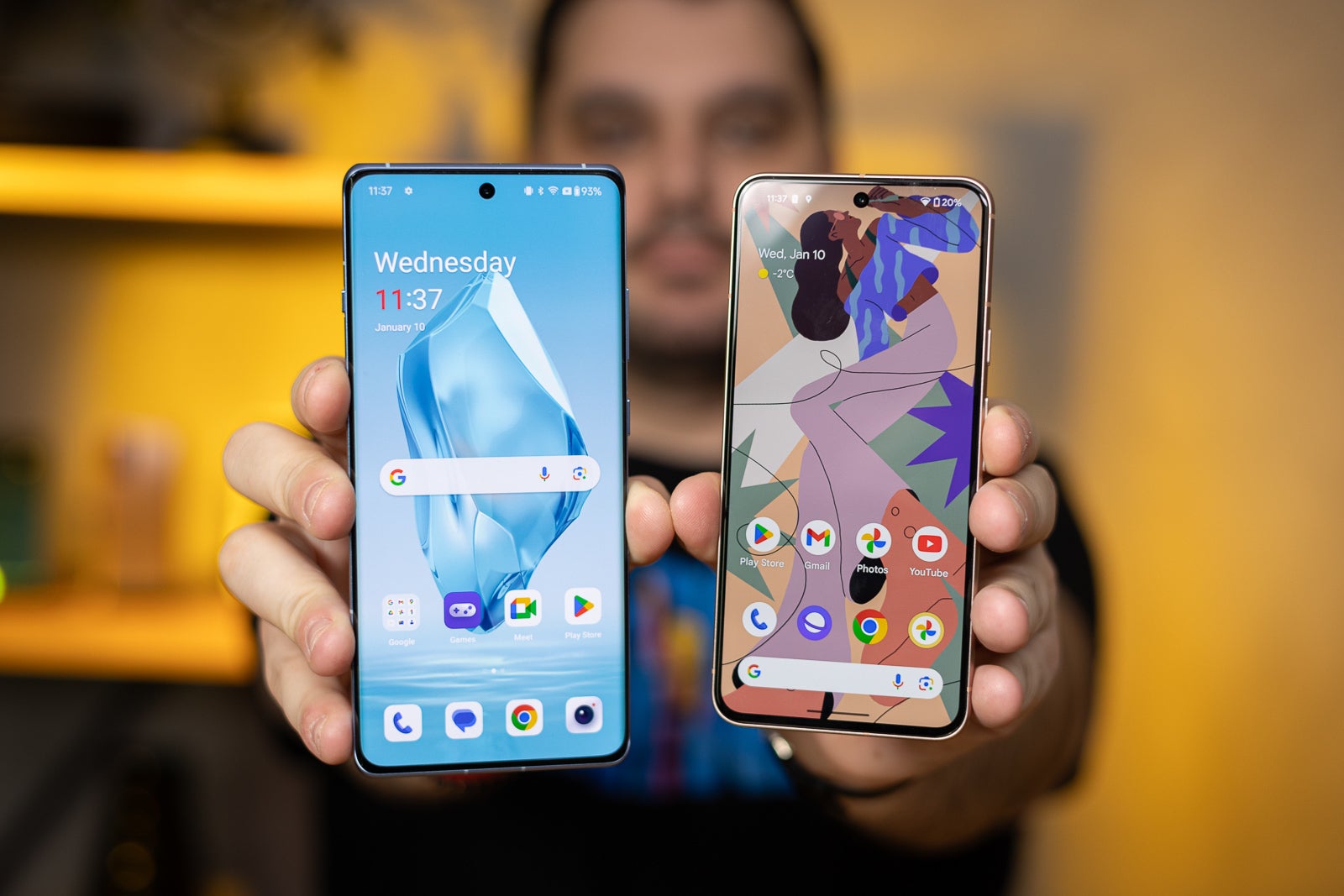
Google's Pixel 8 has a pretty impressive display, one that is a joy to use and left us happy when we were reviewing the phone. It gets very bright so you can easily see what's on it even in very bright spaces, buttery smooth at 120Hz refresh rate, with support for HDR10+ content.
OnePlus has taken things up notch, however, adding what it calls Aqua Touch tech, which helps the display on the 12R stay responsive even when it gets wet. It also supports the Dolby Vision HDR standard on top of HDR10+, and gets even brighter. Not to mention that the fingerprint reader embedded inside the screen is snappier in comparison to the Pixel.
Performance and Software
Raw strength vs creativity
The Pixel 8 might be a flagship, but its Tensor G3 chipset is known to perform worse than the competition, so it shouldn't come as much of a surprise that the Snapdragon 8 Gen 2 inside the OnePlus 12R blows it out of the water in terms of processing power and graphical performance. This is even apparent in real-life situations such as more graphically intensive games or programs that deal with video editing.
If you go for the 256GB version of the OnePlus 12R (which is still $100 cheaper than the base Pixel 8), you will also get storage that is twice as fast and more power efficient compared to the Pixel 8, as well as 16GB of RAM instead of 8GB.
In terms of software experience, with the Pixel you get all of the Google-specific features that are mostly AI-relate, such as Photo Unblur, Magic Editor, super-accurate and fast speech-to-text, and much more. So, there's a certain sensation for novelty in the user experience that the Pixel 8 provides.
On the OnePlus side, you get a more "clean" experience with less "pazazz". It is the simplest version of Android and it just works, so if you prefer a more minimalistic software the 12R might be more up your alley.
As for software support, the Pixel 8 is simply unbeatable with its 7 years of Android updates and security patches, compared to the OnePlus 12R which gets only 3 years of Android updates and 4 years of security patches.
Camera
A surprisingly even match
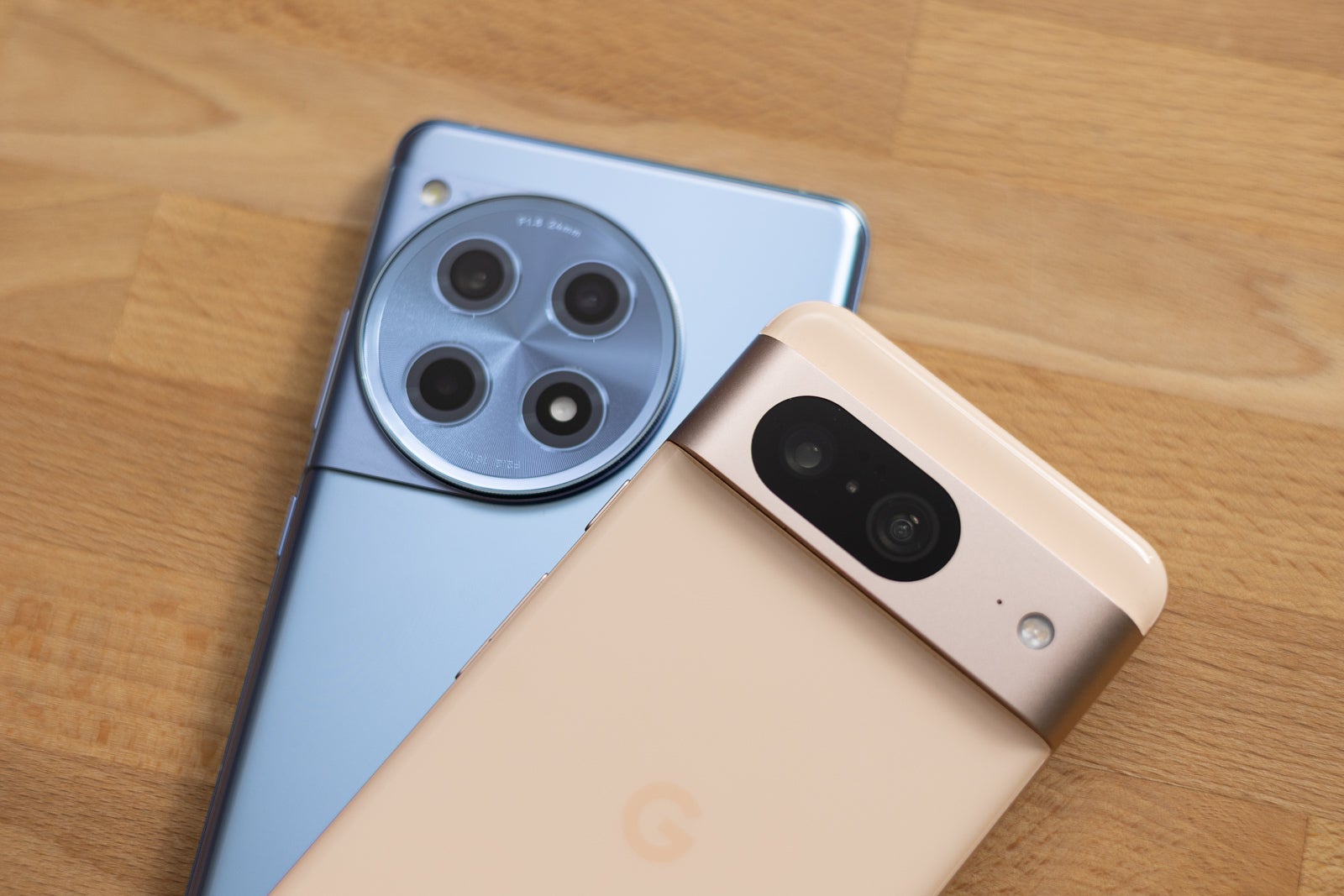
Both phones come with 50MP main cameras, with the 12R rocking an 8MP ultra wide which seems to do almost as well as the 12MP one on the Pixel. The 12R also has a third, macro snapper, but you probably won't feel too compelled to use that one for most of the time. At the front, you get a 16MP shooter on the OnePlus and a 10.5MP on the Pixel 8.
Despite the Pixel being an absolute beast as far as mobile photography goes, the OnePlus 12R comes astonishingly close to that level of camera performance even though it costs $200 less. It really feels like OnePlus has struck the best middleground between price and performance, and we think most users out there would be satisfied with the camera system on the 12R.
Main Camera
For the most part, the main cameras on the OnePlus 12R and Pixel 8 achieve very similar results. The main differences we notice here are the slightly better HDR performance on the Pixel 8, which seems to preserve more detail in the shadows and highlights. The last two photos also show us that the Pixel's maind snapper captures better detail and has lower contrast than the 12R.
Zoom Quality
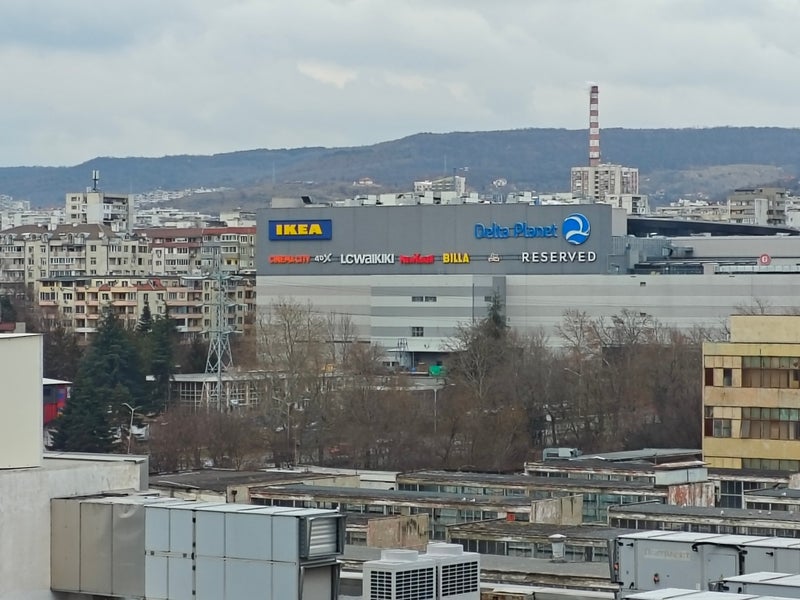
OnePlus 12R 5x
Pixel 8 5x

OnePlus 12R 10x
Pixel 8 10x

OnePlus 12R 5x
Pixel 8 5x

OnePlus 12R 10x
Pixel 8 10x
Neither of the phones has a dedicated telephoto camera, but the Pixel 8 uses a sensor crop and some AI magic to achieve a level of quality that is more than satisfying. That being said, at 10x, both phones start to show deteriorated images.
Portrait Mode
We prefer the portrait mode of the OnePlus 12R, as it seems to be more precise with the edges, whereas the Pixel 8 misses them at some spots. There's also the fact that the Pixel 8 needs to crop in when taking a portrait shot, sacrificing a lot of the surroundings. The one thing we do like better on Google's phone is the bokeh shapes that make up the blurred background — they are circular (like it usually is with bokeh achieved through hardware), unlike the square-shaped forms of the OnePlus 12R.
Ultra-wide Camera
Here we don't see any significant difference between the 12R and Pixel 8, with both ultra-wide cameras achieving similar levels of detail and sharpness. The only slight difference is in the colors, but it is barely noticable.
A few of things to note here. First, the Pixel's front camera shoots with a wider angle lens, so it packs more into a shot — perfect if you want to take a selfie with some else. Second, it is less saturated, so the colors don't pop as much. And third, the Pixel 8's selfie camera seems to have more dynamic range, meaning there are less areas that are too dark or too bright.
Video Quality

The first thing you might spot here is that the OnePlus 12R looks sharper when shooting video, and it also seems to show more detail in the darker areas like the hair, sweater, or at the end of the video comparison where there isn't a lot of light. The biggest benefit with the Pixel is that it can shift from the main and ultra-wide camera while recording, unlike the 12R.
Audio Quality and Haptics
The OnePlus 12R has an amazing pair of speakers for its price. They get very loud without any noticeable amount of audio deterioration and have a slight umph to them in the low end, which makes them suitable for any type of content. The Pixel 8 has pretty good speakers too, but they don't have the same depth, so the experience is slightly less satisfying.
Battery Life and Charging
Choose: faster charging or the option for wireless
The Pixel 8 has some of the best battery life from the mainstream small flagship phones, but the OnePlus comes with a larger 5,500 mAh battery vs the Pixel's 4,575 mAh. That being said, the battery size is not the only factor at play when battery life is concerned, as you can see from our battery test results below.
PhoneArena Battery Test Results:
The OnePlus 12R beats the Pixel 8 in our video streaming test by almost exactly 3 hours, but the two are evenly matched in the web browsing test. We will soon update the graph with the results from our 3D Gaming battery test too, so stay tuned.
The topic of charging capabilities is quite interesting in this case. The OnePlus 12R comes with 80W wired charging speeds, and an 80W charger in the box to boot. On the other hand, the Galaxy S23 FE maxes out at 27W, but it also comes with 18W wireless charging (something the 12R lacks), and 5W reverse-wireless.
Specs Comparison
A quick look at the OnePlus 12R vs Pixel 8 spec sheet and you will spot how different the two phones are, in almost every way.
| Specs | OnePlus 12R | Pixel 8 |
|---|---|---|
| Dimensions | 163.3 x 75.3 x 8.8 mm | 150.5 x 70.8 x 8.9 mm |
| Weight | 207 g | 187 g |
| Screen | 6.78 inches, 1264 x 2780 pixels, LTPO4 AMOLED, 120Hz, 4,500 nits peak brightness, Corning Gorilla Glass Victus 2 | 6.2 inches, 1080 x 2400 pixels, 120Hz, OLED, 2000 nits peak brightness, Corning Gorilla Victus |
| Processor | Qualcomm Snapdragon 8 Gen 2 (4 nm) | Snapdragon 8 Gen 1 (4nm)/Exynos 2200 (4 nm) |
| RAM, Storage and Price | 8/128GB: $499 (UFS 3.1) 16/256GB: $599 (UFS 4.0) *LPDDR5X RAM | 8/128GB: $699 (UFS 3.1) 8/256GB: $759 (UFS 3.1) *LPDDR5X RAM |
| Cameras | 50MP main camera, Sony IMX890 sensor, f/1.8 8MP ultra-wide, Sony IMX355, 112° FOV, f/2.2 2MP macro, f/2.4 16MP front-facing camera with 1080p video, f/2.4 | 50MP main camera, f/1.7 12MP ultra-wide, 126° FOV, f/2.2 10.5MP front-facing camera with 4K video, f/2.2 |
| Battery Size | 5,500 mAh | 4,575 mAh |
| Charging Speeds | 80W wired No wireless charging | 27W wired 18W wireless charging 5W reverse wireless charging |
For starters, the 12R is much larger than the Pixel 8, which also means it has a bigger display. And speaking of the display, it is also a bit brighter and is protected with a newer generation of Gorilla Glass. The other aspect that sets the two phones apart is their battery — which is larger on the 12R — and charging, with the Pixel having a much slower wired charging speed, but offering users the option to wireless charge their phone, or another device via reverse wireless charging.
Summary and Final Verdict

So, it is pretty clear that OnePlus has done a great job at creating a mid-range phone that can give users what they need (and more) for a more affordable price. Of course, the Pixel 8 has that novelty factor thanks to its unique AI features, of which there are many. Not to mention the 7 years of software support, which is a major win on Google's part in this case.
These are two phones so different from each other that you cannot really say which one is better, as the answer to that question depends on what you are looking for. The good news is that, together, they cover a wide range of use cases, so if one is not right for you, the other probably will be.
These are two phones so different from each other that you cannot really say which one is better, as the answer to that question depends on what you are looking for. The good news is that, together, they cover a wide range of use cases, so if one is not right for you, the other probably will be.






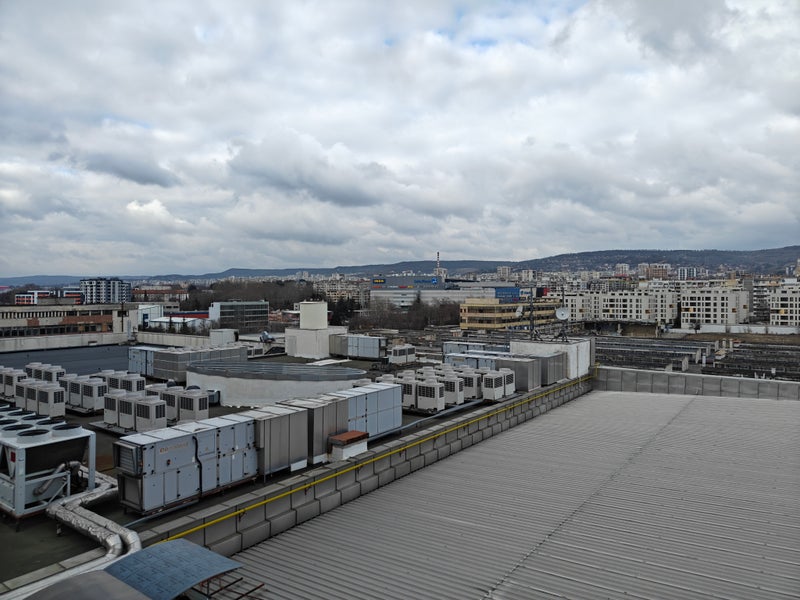
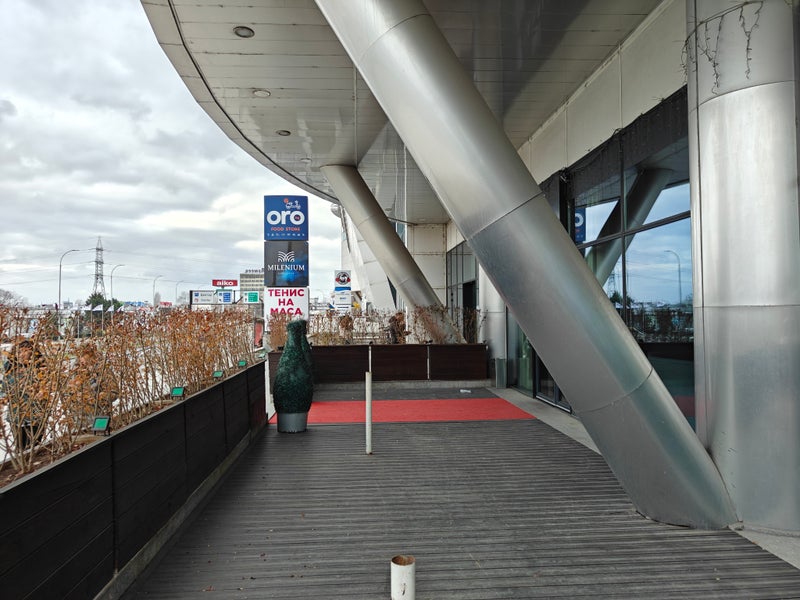






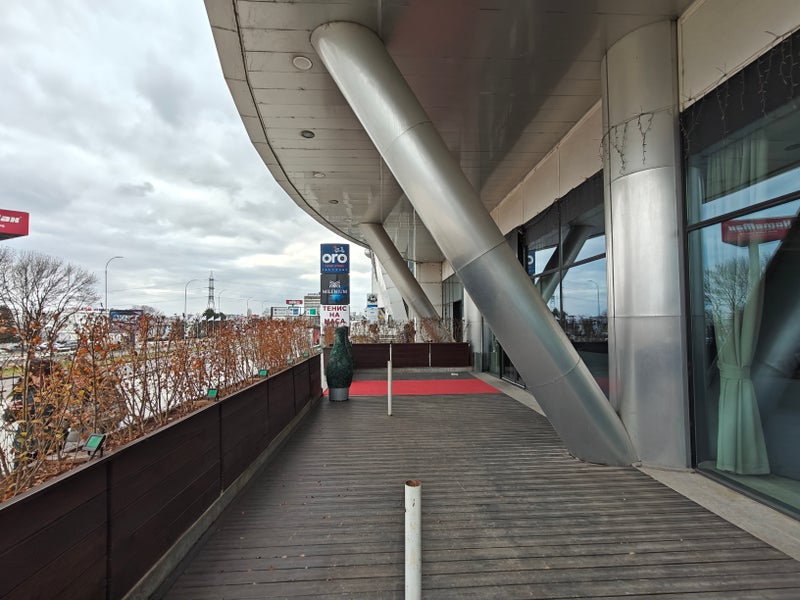
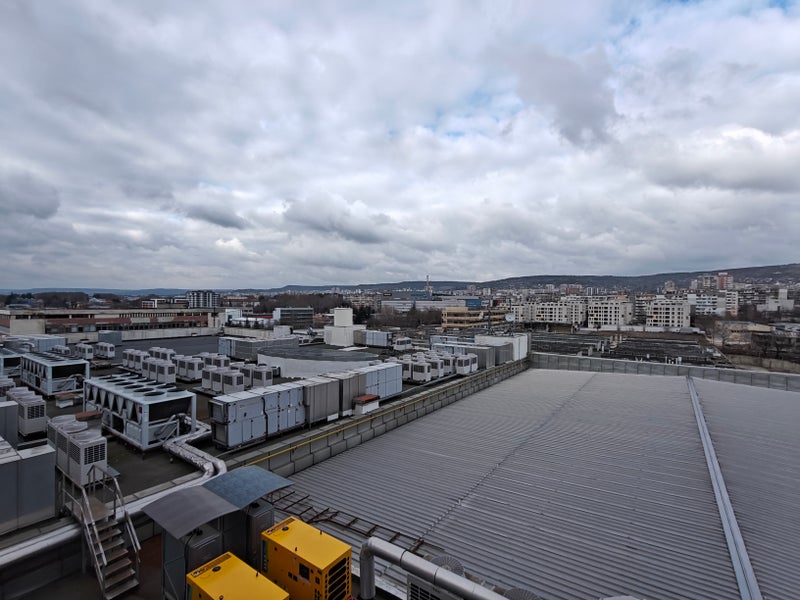









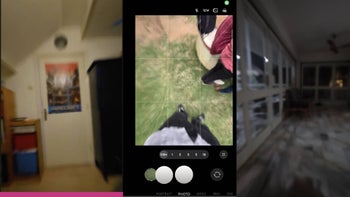




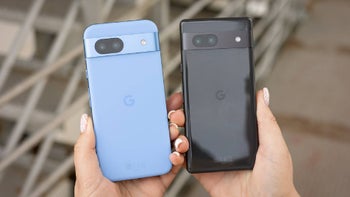






Things that are NOT allowed: